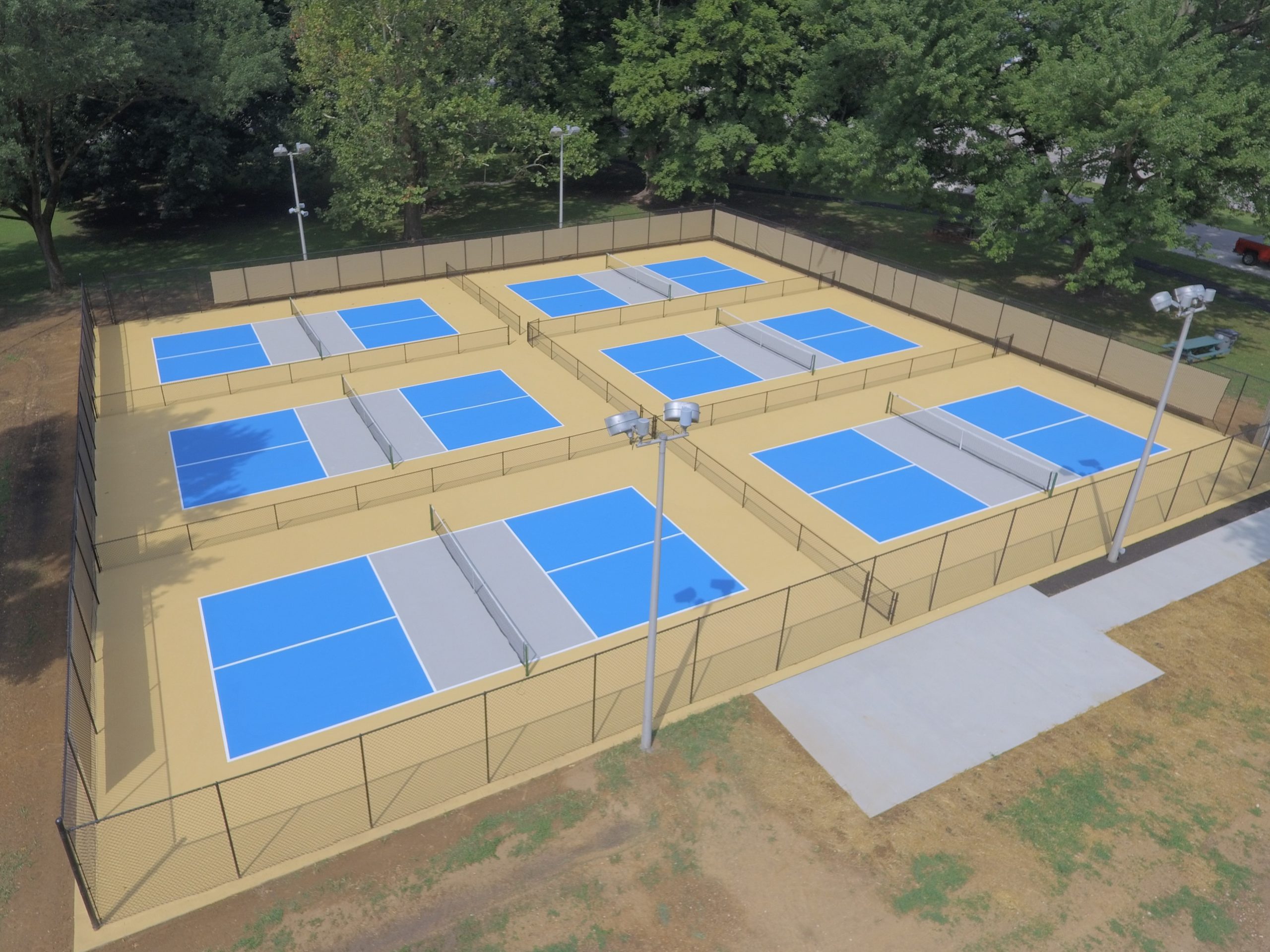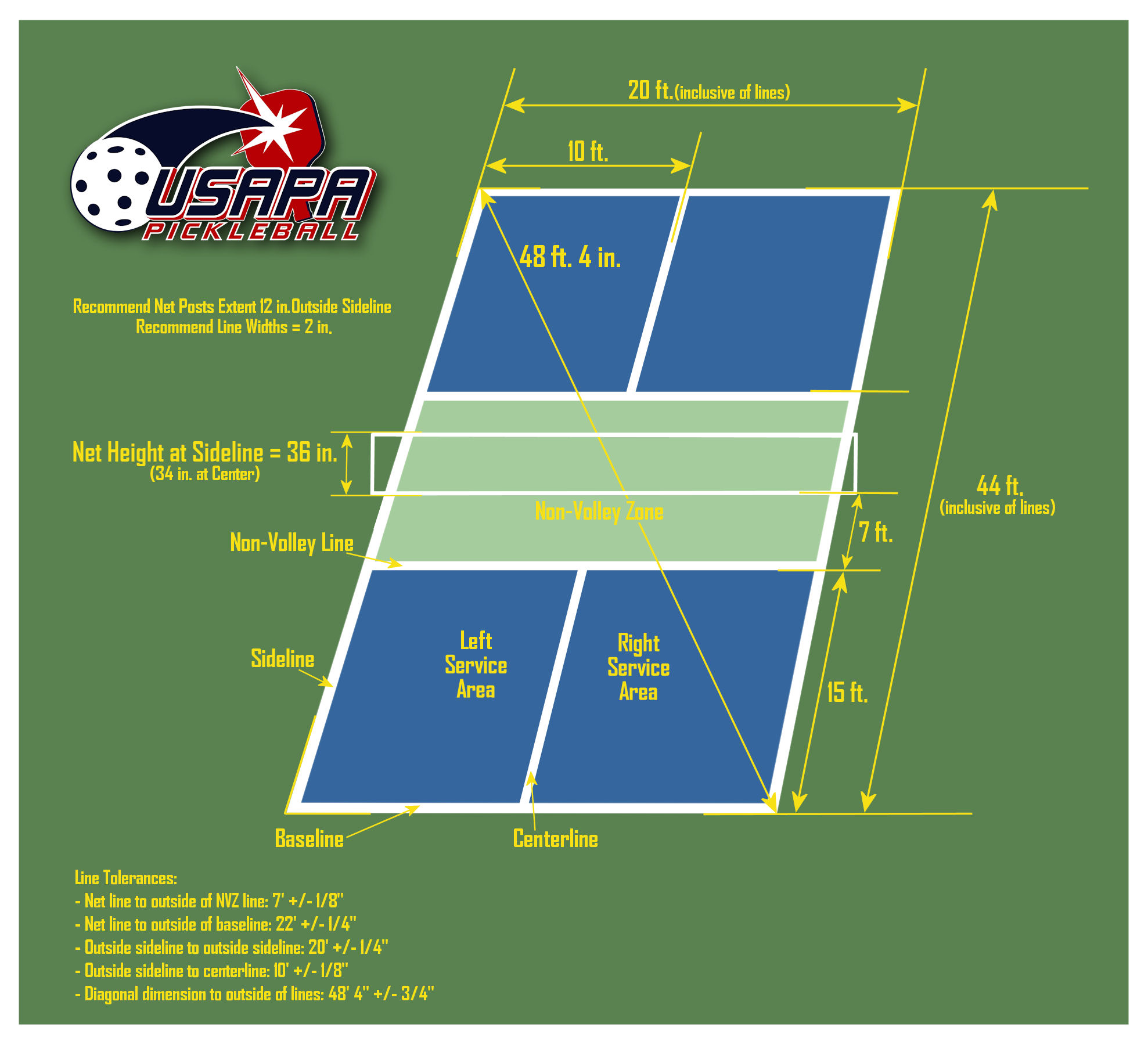Why Illinois and Midwest Are Selecting Us for Pickleball Judiciaries Layout & Building And Construction
Why Illinois and Midwest Are Selecting Us for Pickleball Judiciaries Layout & Building And Construction
Blog Article
Key Aspects in the Construction of Pickleball Courts: From Site Option to Final Coatings
The building of pickleball courts encompasses a series of important aspects, starting with the selection of a suitable site that stabilizes availability with environmental factors to consider. Crucial components such as court dimensions, surface materials, and water drainage systems substantially influence not just the quality of play but likewise the long life of the facility. Moreover, attention to lights and ending up touches can boost the total experience for gamers and viewers alike. Comprehending how each of these parts interrelates might expose understandings that are commonly overlooked, triggering a closer exam of ideal practices in court construction.
Site Option Standards
When starting the building and construction of pickleball courts, it is important to nail down the website option requirements that will certainly make certain optimal playability and availability. The area has to be quickly reachable for players, ideally situated near suburbs or community centers, to motivate participation.
Additionally, the terrain should be level and secure, as uneven ground can cause safety threats and influence gameplay. Appropriate drainage is also critical; selecting a site with great water drainage will certainly aid keep court conditions throughout adverse weather condition.
Another essential factor to consider is the accessibility of energies. Access to electrical power and water is needed for illumination and upkeep functions. Furthermore, proximity to car parking centers is vital, assisting in very easy accessibility for players and viewers alike.
Environmental aspects can not be forgotten; all-natural shade from trees can boost player comfort, while exposure to prevailing winds may interfere with play. Lastly, zoning guidelines and community assistance need to be considered to make certain that the project lines up with neighborhood standards and receives the support it requires for successful implementation. By very carefully evaluating these standards, stakeholders can develop a welcoming and practical setting for pickleball enthusiasts.
Court Capacities and Design
To make sure optimum gameplay and adherence to policies, the dimensions and layout of pickleball courts should be meticulously defined. A common pickleball court determines 20 feet in width and 44 feet in size for both songs and increases play. The recommended layout consists of a non-volley area, typically referred to as the "cooking area," prolonging 7 feet from the web on either side. This location is vital, as it influences player positioning and shot option - Illinois and midwest.
The web height is evaluated 36 inches at the sidelines and 34 inches at the center, developing a mild dip that influences ball trajectory. Court markings are equally important; lines should be 2 inches wide and distinctive in shade to make certain presence.
In addition, a barrier zone surrounding the court is a good idea, commonly expanding 5 to 10 feet beyond the sidelines and standards to accommodate players' movements and enhance safety. Appropriate layout and measurements not only make sure conformity with official laws however also boost the total having fun experience, fitting both recreational and competitive play. Careful planning in these areas is extremely important to the effective building and construction of pickleball courts.
Surface Area Product Options
Choosing the ideal surface material for pickleball courts is essential for making sure ideal gamer efficiency and security. The choice of surface area can dramatically influence gameplay, including ball bounce, grip, and gamer comfort.
There are several options readily available, each with its distinct qualities. Asphalt is a prominent option because of its toughness and low maintenance requirements. It supplies a solid having fun surface that can hold up against different weather however may need periodic resurfacing.
Concrete is an additional extensively made use of material, using exceptional long life and a smooth surface. It permits regular sphere bounce but can be difficult on players' joints, making it less preferable for long-lasting play without correct padding.
For those looking for boosted convenience and shock absorption, supported acrylic surface areas provide a viable alternative. These surfaces combine a base layer with an acrylic topcoat, giving enhanced traction and a softer feel, which is advantageous for lowering the danger of injuries.
Last but not this content least, synthetic turf is getting traction, specifically for multi-purpose centers. Its convenience and reduced maintenance needs make it an attractive alternative, this contact form though it might not provide the same ball reaction as traditional hard courts. Mindful factor to consider of these options will certainly make certain an ideal playing environment.
Drain and Illumination Factors To Consider
Correct drain and reliable lights are vital components in the building of pickleball courts, substantially influencing both playability and safety and security. Adequate water drainage systems protect against water accumulation, which can lead to unsafe surfaces and damages to the court structure.
Lighting is similarly vital, specifically for courts planned for evening use. Proper lighting improves presence, making certain that players can see the ball clearly and minimizing the risk of mishaps. The positioning of lighting components must be tactically intended to remove darkness and give even distribution of light throughout the court. LED lights are advised for their power efficiency and longevity, supplying brilliant illumination while lowering functional expenses.

Final Finishes and Upkeep
After addressing water drainage and illumination considerations, focus turns to the final surfaces and recurring upkeep of pickleball courts. Typical alternatives consist of acrylic finishes and specialized sporting activities surfaces that give optimal traction and padding.

Seasonal maintenance could include resurfacing every couple of years, depending on usage and ecological aspects. Properly maintaining webs, court lines, and surrounding locations is just as important to supply a risk-free and enjoyable having fun experience. By purchasing quality surfaces and sticking to a structured maintenance schedule, facility owners can ensure their pickleball courts remain in excellent condition for several years to come.
Conclusion
Finally, the effective construction of pickleball courts depends upon careful focus to numerous vital aspects. Site option need to prioritize access and terrain security, while court measurements and layout should stick to ideal criteria for gameplay. The choice of surface area material considerably influences gamer security and efficiency. Effective drainage and sufficient lighting add to court longevity and exposure. Lastly, top quality finishes and a robust check over here upkeep timetable are crucial for protecting the court's problem, boosting the overall experience for gamers and spectators alike.
Report this page